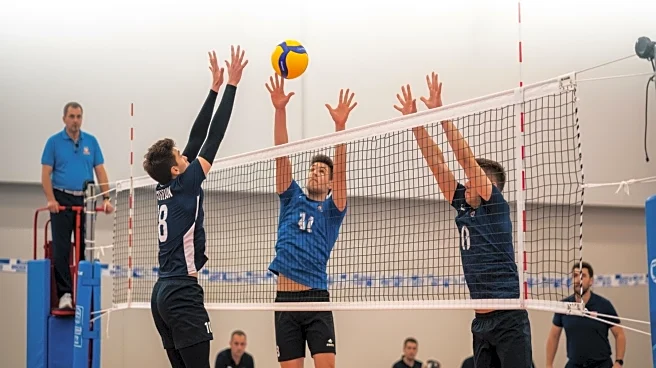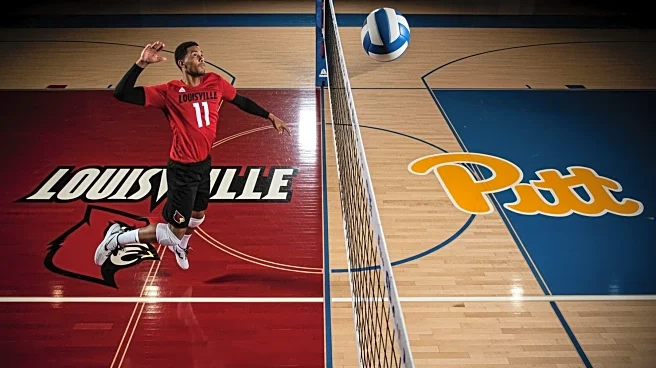What's Happening?
The NCAA Division I women's volleyball committee has announced its in-season top-16 rankings, providing an early look at potential NCAA tournament seedings. The rankings were revealed during the Louisville vs. Pittsburgh match on October 19, 2025. This
marks the second year that the committee has expanded the rankings to include 16 teams, as opposed to the previous top 10. The rankings are based on several criteria, including strength of schedule, top-10 wins, and head-to-head competition. Nebraska, Texas, and Pittsburgh lead the rankings, followed by Kentucky and SMU. The rankings offer fans insight into the teams' performances and potential seedings ahead of Selection Sunday on November 30.
Why It's Important?
The release of the in-season rankings is significant as it provides a snapshot of the competitive landscape in NCAA women's volleyball. These rankings can influence perceptions and strategies as teams prepare for the NCAA tournament. For teams like Nebraska and Texas, leading the rankings can boost morale and attract attention from fans and media. Conversely, teams lower in the rankings may use this as motivation to improve their performance. The expanded rankings also reflect the growing popularity and competitiveness of women's volleyball, highlighting the sport's development and the increasing depth of talent across the nation.
What's Next?
The NCAA Division I women's volleyball championship semifinals and championship are scheduled to take place at the T-Mobile Center in Kansas City, Missouri, on December 18 and December 21, respectively. The semifinals will begin at 6:30 p.m. ET on December 18, with the second match starting shortly after the first concludes. The national championship match is set for 3:30 p.m. ET on December 21. Teams will continue to compete in regular-season matches leading up to Selection Sunday, where final seedings will be determined.
Beyond the Headlines
The expansion of the rankings to include 16 teams reflects a broader trend in collegiate sports towards inclusivity and recognition of emerging programs. This change may encourage smaller or less traditionally dominant programs to invest more in their volleyball teams, potentially leading to a more competitive and diverse field in future tournaments. Additionally, the rankings can impact recruitment efforts, as higher-ranked teams may attract top-tier talent looking to compete at a high level.















